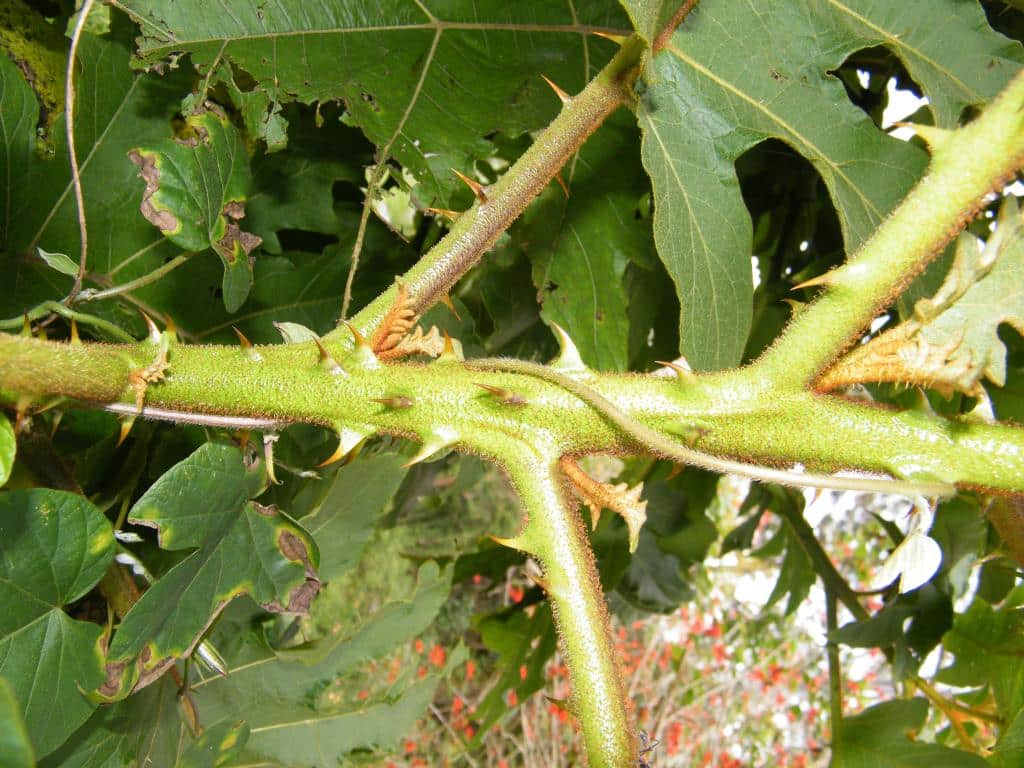Generally, we love our fig trees on the mid north coast, however a couple of silent invaders are giving them a bad name.
Giant devil’s fig and Devil’s fig (Solanum chrysotrichum and Solanum torvum) aren’t really figs at all, belonging to the Solanum genus with tomatoes, potatoes and eggplant. Originating in the Americas, these plants are occasionally used as rootstock for eggplant, and rarely, the fruit are consumed in Asian cooking. Unfortunately they can rapidly escape cultivation thanks to the fruit being attractive to birds and flying foxes, and become a major nuisance in riparian areas.

Giant devil’s fig grows to 4m tall (Devil’s fig to 3m) with fine brown or white hairs on stems and new leaf growth. Stems and leaves contain sharp prickles, making it hazardous to handle and capable of injuring people, livestock and wildlife. The leaves are large – up to 30 x 20cm for Giant devil’s fig, narrower for Devil’s fig. Giant devil’s fig leaves are deeply lobed, whereas Devil’s fig has shallow or no lobes. Both plants have white, star-shaped flowers in clusters, followed by green berries up to 15mm across.
Once established, these plants germinate and grow rapidly in our environment, and can be spread long distances. The fruit can be toxic if eaten in large amounts. On farms and waterways they quickly outcompete native plants and block access. Suspected infestations must be dealt with quickly by contacting Council’s Biosecurity Officer for advice on control. For more information refer to NSW WeedWise





